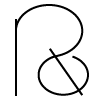It was amazing to have the opportunity to return to the University of Brighton to share my background in user experience (UX) design and learnings since graduating. It’s crazy to believe that almost two years has passed!
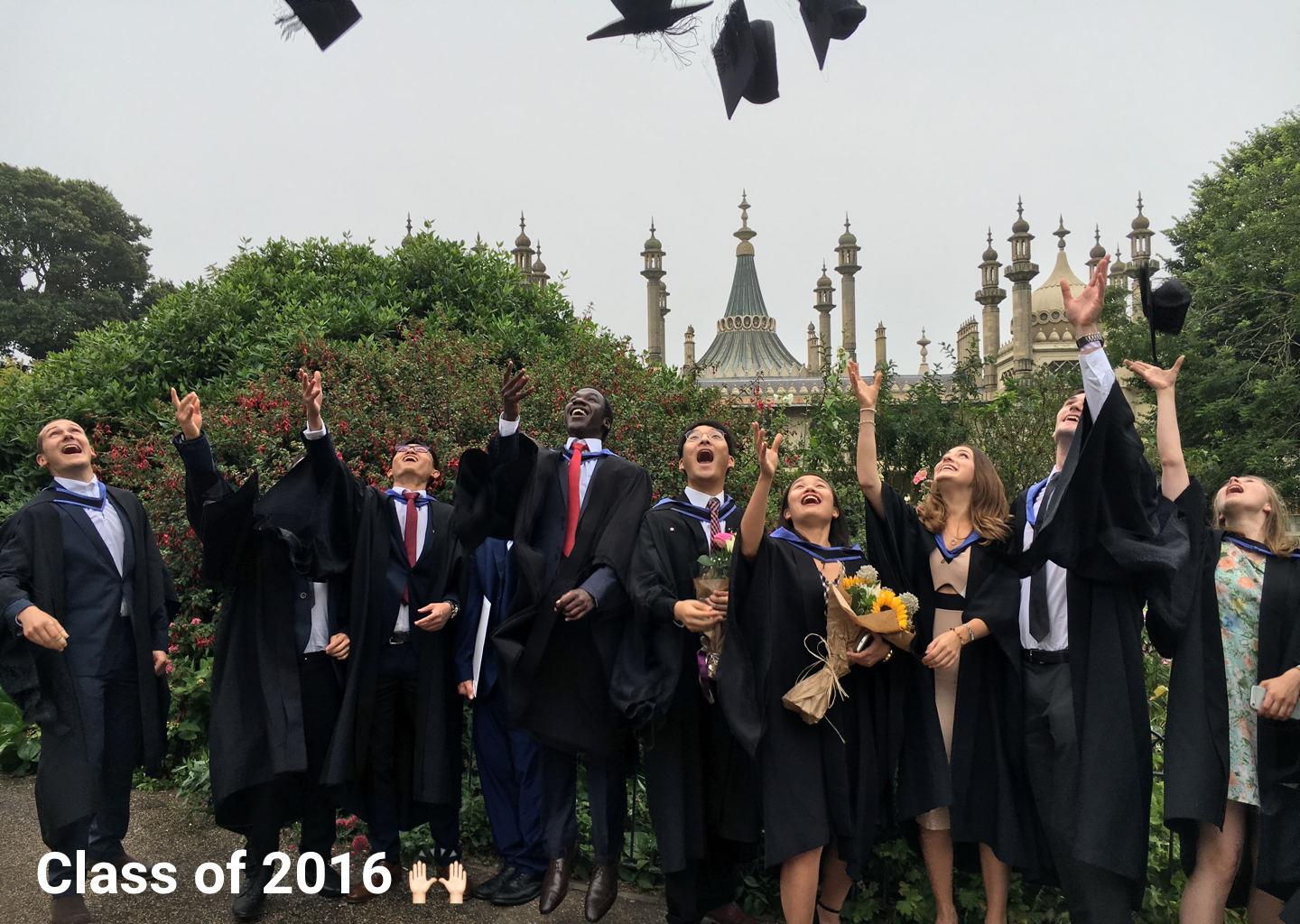
I was invited to the Speaker Series which is a new selection of talks that brings previous product design graduates back to the university to talk about their experiences, where they currently are in their design career and impart knowledge onto the current cohort of designers.
As this was the third session, I was quite fortunate that there hadn’t been any UX designers before me. Although having said that, I returned with my friend Chloé, who incidentally planned on talking about UX. Fortunately we had spoken beforehand and this meant that whilst there would be some crossover, we wouldn’t talk about the exact same things.
My talk consisted of a brief overview of what UX is, tools, software and processes that I used on a daily basis and some career/life advice which had helped me get to where I currently am.
So you’re in UX huh? Why should I care?
UX is a hot term at the moment, companies are investing heavily into hiring UX designers (for example, IBM) because they have finally identified they need to have good design embedded into their products and services. They have realised the value associated with delivering delightful user experiences.
What is good design?
It is ensuring that a product or service is functional, usable and desirable. Based on the type of company, product or service, very few are able to fully meet the criteria on all of them. The reason for this is because out of those three attributes, some will be prioritised over others. For example, a company manufacturing hammers would prioritise functionality and usability over desirability. Arguably, one of the few companies that is able to ship products and services that are consistently functional, usable and desirable at a high level is Apple.
It was useful to emphasise that UX is not only applicable to apps and websites, bringing it into the physical world, I gave an example of Airbnb. There is one side of the user experience which is screen-based, the exploratory phase, deciding where to go, where to stay and what experiences could be enjoyed. There is also the other side of that coin where you are interacting with a physical entity. The physical location. The real world. This forms the overall part of the user experience. For example, if someone has selected a location in London that appears to look great and the reviews seem reasonable, if the traveller arrives at the location and is presented with something completely different, worse than what they were expecting and not living up to their expectations, then they are going to have a negative experience.
The UX umbrella
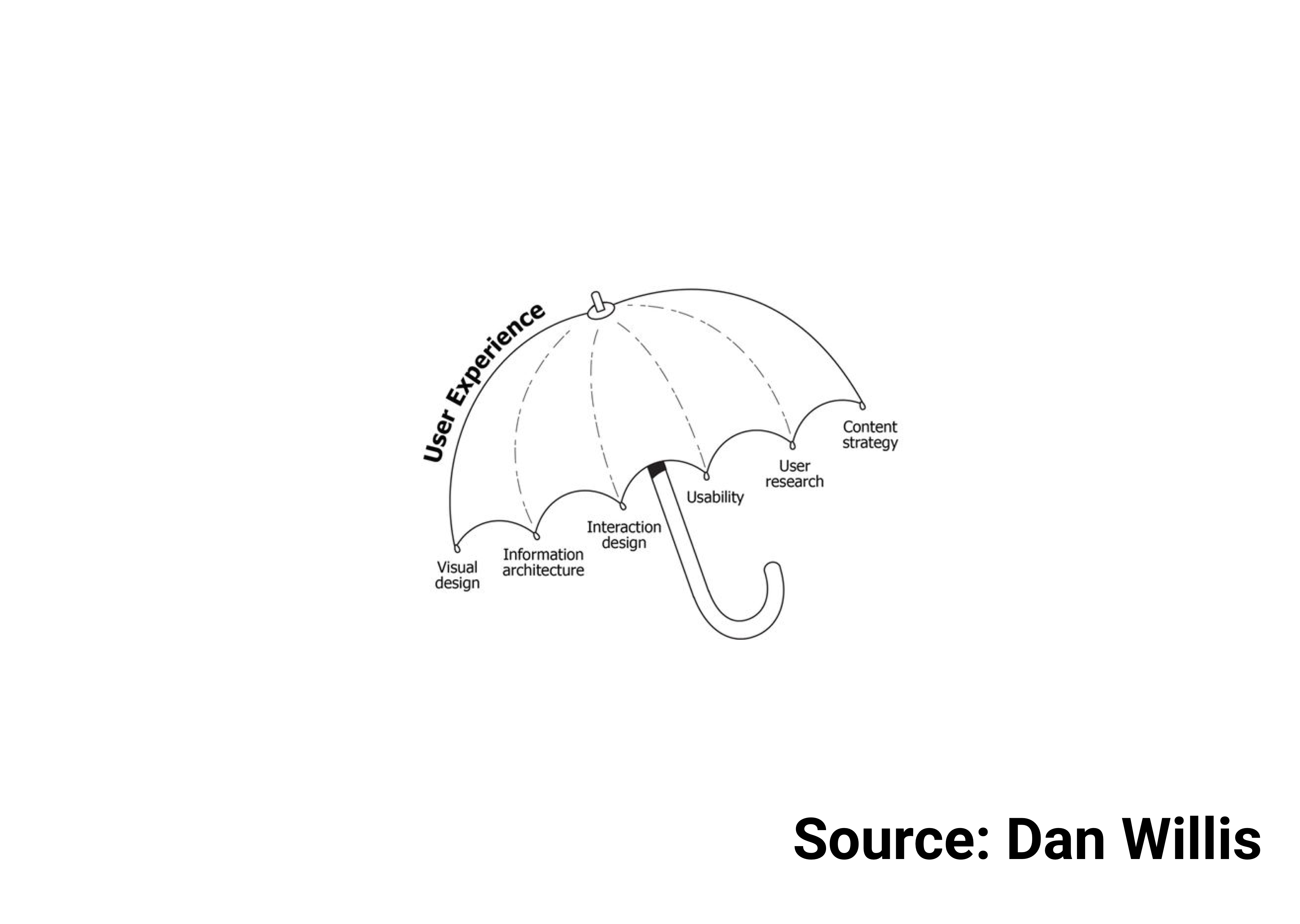
I really love showing this visual by Dan Willis to people who don’t know too much about UX because it shows that UX encompasses a lot of different areas of design. It is a really great visual that highlights the breadth of skills that a UX designer can have. From research through to content strategy. The sum of all of these are what make up UX. Of course, some of those skills may be stronger than others and we may prefer doing certain things over others, so we should always be trying to find ways to improve and develop.
Multidisciplinary teams & Geographical Syncing
At university, if you have a group project to do, it is fairly easy to get everyone in the same location and complete that task. When working in a large corporate which has offices across the world, it makes the challenge even greater. Heavy reliance is placed on Skype calls, user stories are explained in greater detail and finding a time that suits everyone can be difficult. There is a lot more room to leave things open to interpretation which can slow down projects. The difference that a face-to-face project and decision-making is quite substantial.
Software Development Process (JIRA, Confluence)
In my current company, we work using an agile methodology and have software development tools such as, Confluence and JIRA to support what we do. In Confluence, all of the user stories are written and these are linked to tickets that are created in JIRA.
The main purpose of these pieces of software is that there is clear visibility on what people are working on as there are specific sprints and tickets that are prioritised to go into each sprint. User points are then assigned to each sprint and at the end you can identify whether you are on track based on items completed. Levels of priority can also be assigned to each item whether it is a task, bug, or something else.
I thought it was necessary to share these kinds of inner workings of a large corporate and how they operate because as a university student, unless having previous experience or connections to someone who works in one, they would have no idea how design is factored into software development.

This is a piece of software that I am absolutely in love with. Better yet, it is the industry-standard for creating screen-based designs.
Why is it so good?
The application is mac-only and fairly straightforward to use. Plugins and other features like symbols, bring the app to life and enhance workflows and efficiency. Some plugins for example, Stark, help designers to factor in accessibility early on in their design process by viewing their designs as a visually-impaired user. Symbols speed up design by creating an asset once and being able to reuse it. You can also override symbols too which can bring designs to life.
There are many other great aspects of Sketch that I could keep writing about because it is a tool that I enjoy using daily and have watched how it has developed over the years.
Four Pieces of Advice:
Be proactive
“You can’t just expect opportunity to turn up if you don’t go out looking for it and are not prepared for it when it arrives.”
I have always been someone that is hungry and goes out looking for opportunities. Yes, there is an element of luck involved. There is that common phrase of ‘right place, right time’ but you also have to be prepared for when the opportunity does turn up. The other important skill is recognising an opportunity.
Before graduating, I was already looking at the next steps and how to kickstart my career. Yes, I had already completed an internship but I knew that that alone would not be enough to land me my next role. A chance meeting with Dick Powell, one of the founders of design company Seymour Powell had me creating a refreshed portfolio in a day and a half as he wanted to see what I could do. Unfortunately, the conversation didn’t go any further with Dick Powell but I had a refreshed portfolio which I could then use for other job applications. Fast forward a week and I found myself at a job fair and through all of the noise, discovered a company called VOLO. They weren’t looking for designers but in fact I recognised the opportunity of volunteering my skills in design to a startup. I realised that this would work for a number of reasons, firstly, I could continue building my skills as a designer by helping refresh their website. Secondly, I could work on my softer skills and learn how a startup worked by developing additional skills in business, marketing and networking. Finally, the most important aspect was that I believed in their cause. Skills-based volunteering: ‘Build skills, do good and get ahead’.
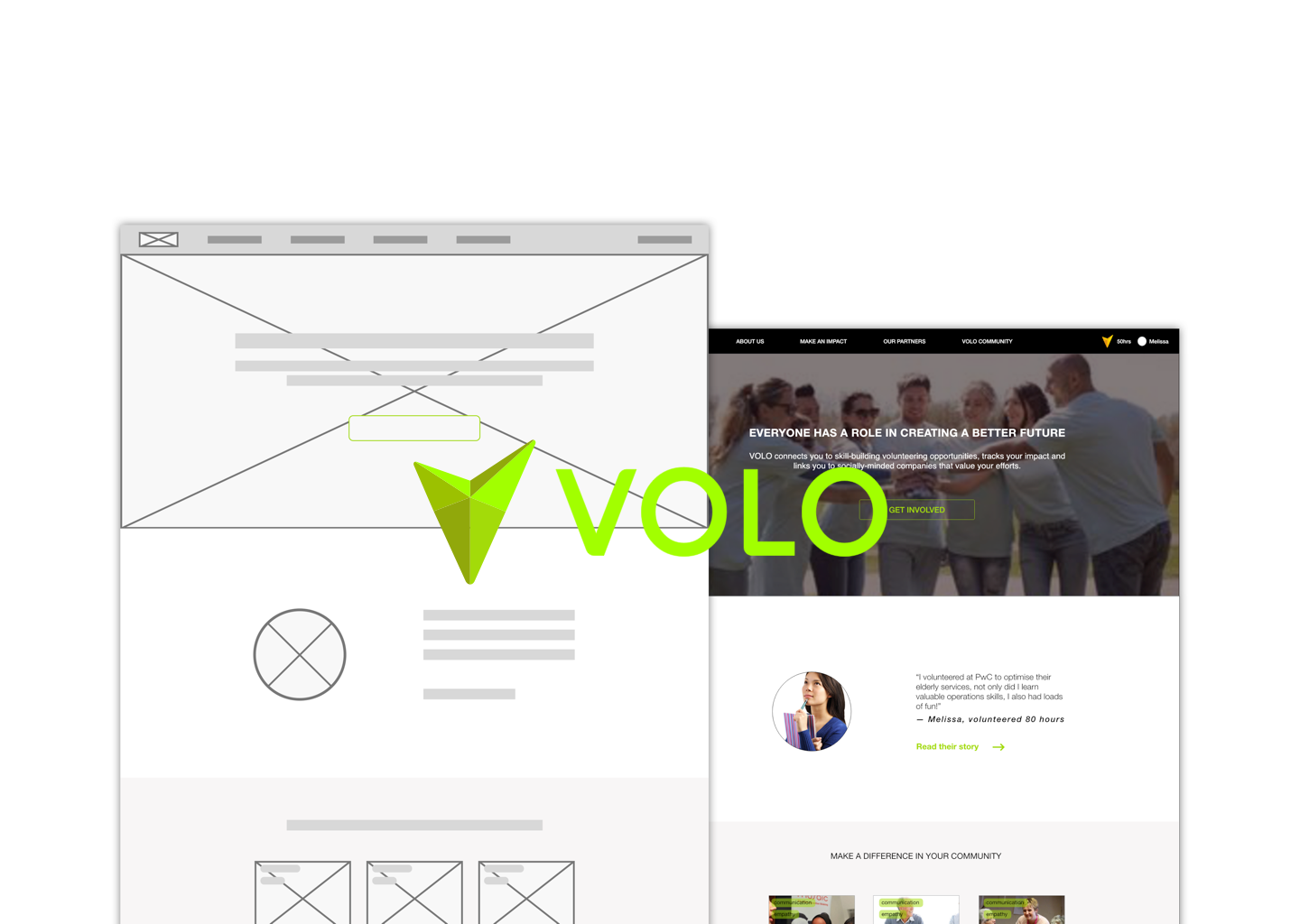
Sometimes doing something different is a good thing. Whilst volunteering at VOLO, I managed to land a job working at Apple in Covent Garden before transitioning over to Regent Street. It was an incredible opportunity, working environment, culture, everything! What I found was that my product design degree translated into the role that I was doing. Talking to customers, researching their needs, developing empathy and finding a solution. These were all things that I had learnt and were transferable from my degree.
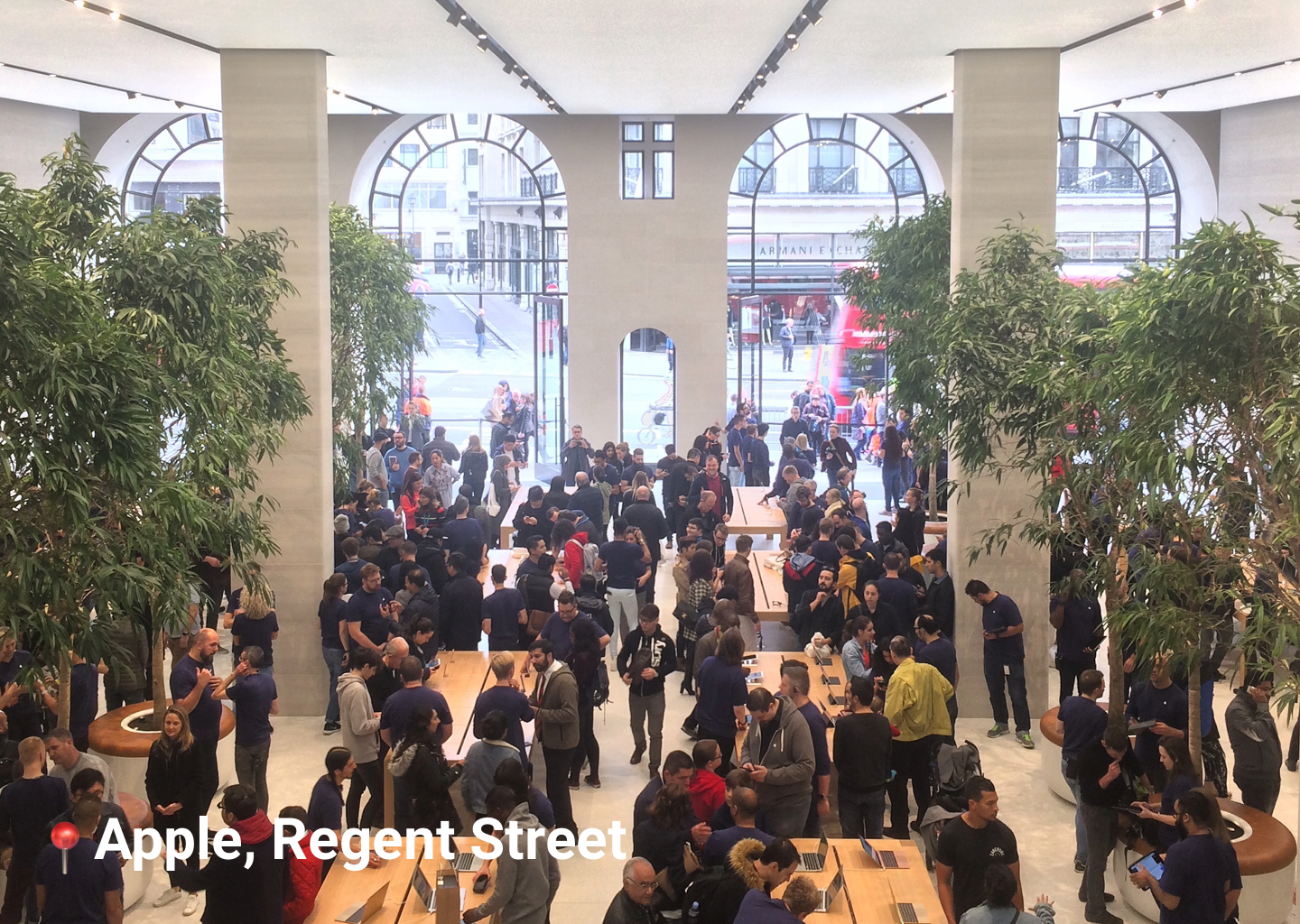
Be Resilient
When it comes to jobs, what I have come to realise is that, it is not necessarily hard to get a job, but it’s hard to get a job that you actually like and is something that is aligned to something that you actually want to do, your values, goals and motivations. So whilst it might be easy to send a wave of applications out to companies because you may be desperate for a job, just be a bit mindful. You don’t have to accept the first offer that you get. Take your time and recognise that you might find yourself in a job that you don’t like but it won’t necessarily be the job or the company that you’re in for the rest of your life.
Expect the Unexpected
Sometimes it is possible for us to overplan and overthink. We can make plans for the future based on assumptions and sometimes things don’t always go to plan and other times, unexpected things happen that can send you in a completely different direction. In the beginning it could seem like the worst possible thing to happen (depending on what it is obviously) but when you look back, it could be the best thing to have happened. A good example of this was whilst at university, the course structure changed from what we had in our first year when we returned for our second year. In the beginning, there were a few pain points and teething issues but looking back, it was the best thing that could have happened because it set me up for my career perfectly.
When faced with challenging decisions (you know, the kind you lose sleep over), I remember my mentor once told me that, “…when you make a decision, it was right at the time and the best decision that you could make with the information that you had in front of you.”
You can ask for advice from a lot of people but at the end of the day, you have to find a way to listen to your inner voice. It is you that has to make the decision and it is you that has to live with the decision that you make as well.
Sometimes it can be the wrong decision but you can’t fully know that at the time. You can and will learn a lot by making mistakes because it teaches you lessons so as not to repeat the mistake again.
Keep Learning
Learning isn’t something that is limited to just designers, we should constantly be finding new things to learn. Why? It broadens our thinking, exposes us to new ways of doing things, allows us to interact with other people and helps us to pass on that knowledge to someone else.
For the design students at Brighton, I shared them the following list of things to broaden their skills:
- Attend meetups/hackathons
- Sign up to online courses
- Complete side projects
- Volunteer (skills-based volunteering)
- Participate in social innovation challenges
- Observe upcoming trends and technologies.
On Reflection
I was very happy with how the talk turned out because I was able to share some of the experiences, methods and things that have helped me get to where I currently am. I could have delved much deeper into certain aspects but having a specific time slot prevented me from fully doing so. The talk was well received and plans have already been made to return to the university and host a session on how to use Sketch to help the students with their prototyping.
It is interesting to see that there are certainly a lot more design resources out there now even in the short time since I graduated from university. It is just about finding what you are passionate about, developing yourself and being ready for when an opportunity does turn up. We now live in a world where everyone is hustling, they have their main focus whether that is work or university and have a side project to keep them busy.
